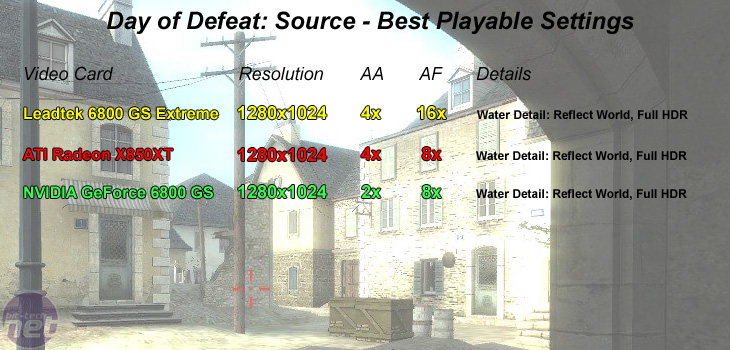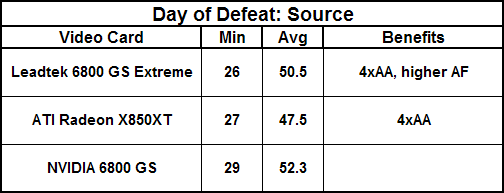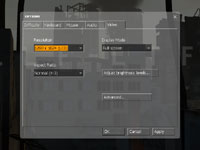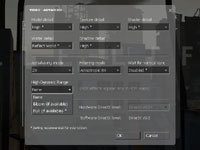Day of Defeat: Source
Publisher: ValveWe used the popular remake of the World War II online multiplayer, Day of Defeat: Source, which uses Valve's implementation of high-dynamic range rendering. We did three five minute portions of real world game play on the dod_anzio map. We connected to three different public servers each with a ping of less than 30ms and 16-20 players in the game when we were recording the frame rates.
Anti-Aliasing and Anisotropic Filtering were controlled from inside the game, and thus the drivers were left set to "Application Controlled". There are three options for the method of HDR used in this title. You can either disable HDR completely, make use of "Bloom" which is just what it says and less resource hungry in comparison to "Full" which, again is just what it says. It utilises a full dynamic range with the iris effect too.
We have written quite a bit about Half-Life 2: Lost Coast, Day of Defeat: Source and how Valve have implemented HDR in to the Source Engine. You can check out the articles listed below for more information on The Lost Coast & Day of Defeat: Source.
- Half-Life 2: Lost Coast HDR overview
- Half-Life 2: Lost Coast hands on
- Half-Life 2: Lost Coast Benchmarks & Video
- Day of Defeat: Source
Below is a table of the best-playable settings that we found best for each video card configuration. We found that 25 frames per second is the required minimum, and a target of 45-50 frames per second (or higher) is the average frame rate in our manual run throughs on these mainstream video cards.


The Radeon X850XT was capable of playing the game best at 1280x1024 4xAA 8xAF with the same in-game detail settings as the Leadtek 6800 GS Extreme. Aside from the quality improvements that the Leadtek GS Extreme provided, the Radeon X850XT delivered a lower frame rate on average. We found that gameplay was sometimes a little choppy, irrespective of the server or map we played on.
This wasn't reflected in quite so obviously in the frame rates that we've displayed, but there were many occasions where the frame rate dipped below 35 frames per second. On the other hand, the Leadtek 6800 GS Extreme only dipped below 35 frames per second on a single occasion.
The reference 6800 GS was slower than the Radeon X850XT, and was choppier than it when 4xAA was applied. We felt that the best trade off was to reduce the antialiasing quality to 2xAA - this removed all of the choppiness and we were able to play the game without issue at 1280x1024 2xAA 8xAF.

MSI MPG Velox 100R Chassis Review
October 14 2021 | 15:04








Want to comment? Please log in.